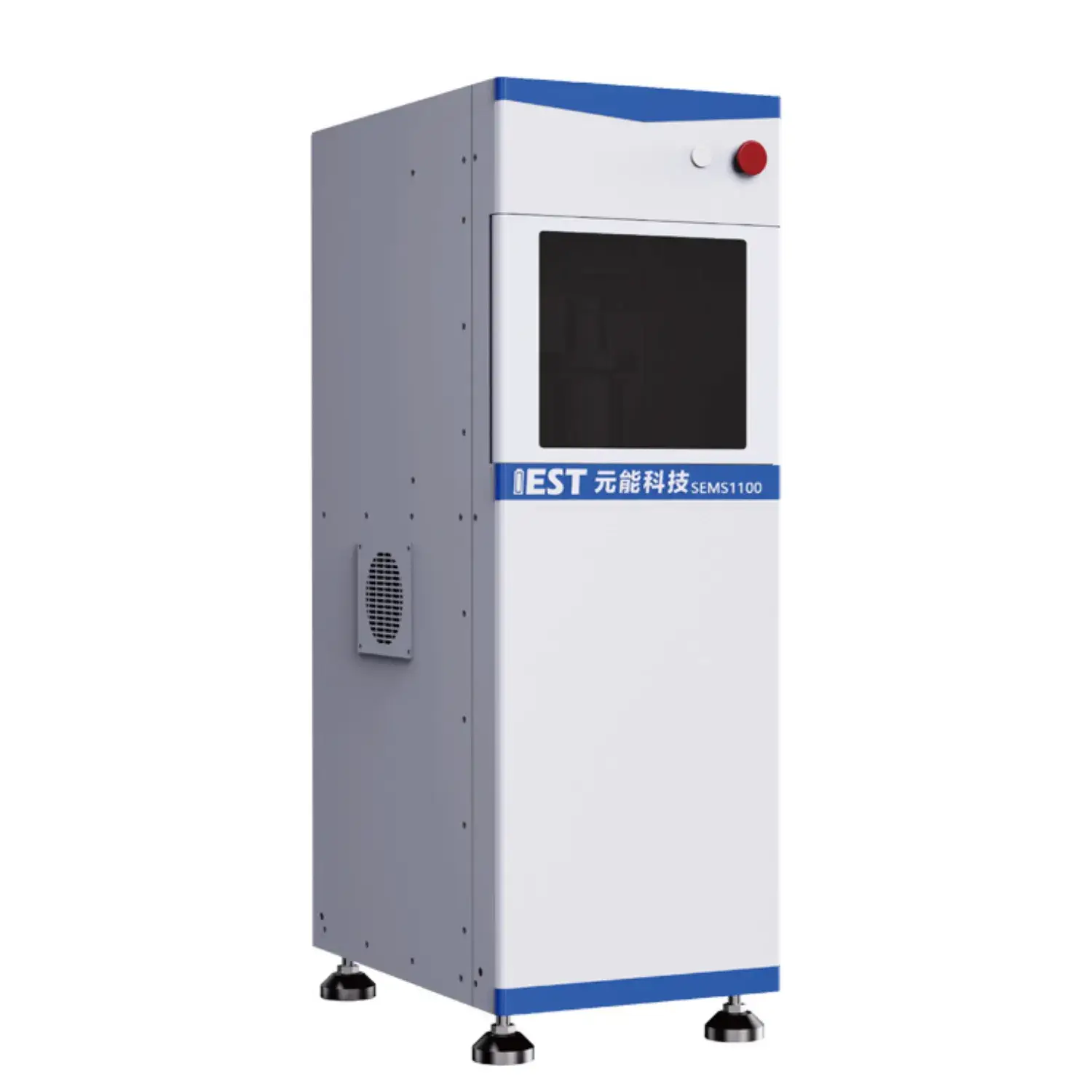Performance validation studies powder resistivity analyzer for pilot plants

Electrochemical impedance analysis clarifies battery dynamics of lithium cells, during temperature cycling. Via analyzing the impedance response of the battery over frequencies, valuable insights can be revealed regarding the internal resistance, charge transfer kinetics, and overall health of the lithium-ion battery system. Notably, EIS testing can help to quantify the impact associated with temperature fluctuations on key indicators such as electrode polarization resistance, ionic conductivity, and double layer capacitance.
- Moreover, EIS data can be used to reveal potential failure mechanisms attributable to thermal stress, enabling the development of strategies for optimizing battery layout and improving their overall service life.
- This information is crucial for ensuring the safe and dependable operation across many lithium-ion batteries in a wide range concerning applications, in automotive, portable and stationary uses.
Accelerated Degradation Testing of Lithium Batteries: A Comprehensive Analysis
Lithium battery technology supports numerous gadgets, demanding rigorous testing to ensure their reliability and longevity. ADT functions as a key evaluation tool for simulating the consequences of prolonged use and diverse field conditions on battery performance. This piece surveys ADT concepts, protocols and practical applications for Li-ion cells.
ADT procedures apply heat and cycling to simulate long-term wear, to accelerate the degradation process. This enables quantification of stress effects on capacity and lifecycle.
Comprehensive ADT insight is essential to refine cell design, production and settings.
Using EIS to Evaluate Battery Behavior
Impedance spectroscopy inspects electrode and electrolyte interactions to reveal battery internals. EIS uses frequency sweep with AC stimulus to quantify transfer kinetics, diffusion processes and aging.
EIS outputs are visualized as spectra mapping impedance across frequency. Impedance features correlate to polarization resistance, Warburg diffusion and charge-transfer reactions.
Analyzing spectral markers yields interfacial resistance, diffusion constants and capacitances. Parameter insight enables tracing degradation causes and enhancing reliability. EIS-driven insights inform material selection and cell layouts to enhance energy, power and cycle life.
A Comprehensive Guide to Powder Resistivity Testing
These systems perform critical resistivity testing in the characterization of powdered materials. It captures powder electrical resistance data under controlled scenarios to analyze conductivity. Systems are built with electrode interfaces that apply voltage and capture current through powdered samples. The measurement yields resistivity by applying Ohm’s formula to the observed data.
Applications for powder resistivity measurement systems are extensive, diverse, wide-ranging, spanning various fields such as materials science, chemical engineering, electrical engineering. Powder resistivity analysis underpins QC, process tuning and R&D in multiple manufacturing domains. Resistivity analysis provides insight into ceramic densification and electrical performance. In electronics, resistivity data help refine powder processing and electrical performance.

Real-Time Resistivity Control for Powder Optimization
Real-time resistivity measurement empowers manufacturers to steer powder properties during processing. Ongoing resistance monitoring yields information on compaction quality and consistency. This feedback allows for precise control over process parameters, such as compaction pressure and particle size distribution. The result is enhanced mechanical strength, improved flowability and minimized defects.
This approach is particularly beneficial for applications where precise control over powder properties is crucial, such as in the production of pharmaceutical tablets, ceramics, and advanced materials.
Advanced Powder Electrical Characterization Tools for Scientists
Sophisticated resistivity systems are key assets in materials characterization labs. Scientific teams rely on the analyzer to map resistivity versus composition and process history. Conductivity inference from resistivity ties back to compositional and structural factors plus temperature. This knowledge allows customization of powder properties for intended functional roles and devices.
- Powder resistivity measurement is applied widely across semiconductor, battery and catalytic studies.
- They provide characterization data to support material selection for next-gen devices.
Embedded Resistivity Measurement in Electrode Fabrication
Real-time, direct, online resistivity measurements of powders are crucial, essential, vital for optimizing electrode fabrication processes. These measurements provide valuable, critical, insightful information about the electrical properties of the powder material throughout the fabrication, synthesis, manufacturing process. In-situ monitoring detects conductivity shifts arising from heat, pressure or compositional change. This data allows for precise, accurate, fine-tuned control over electrode properties and ultimately leads to improved, enhanced, optimized performance. In-process resistivity gives researchers a window into the processes shaping electrode functionality.

Advanced Systems for Evaluating Powder Conductivity
Analyzing electrical conductivity remains a core materials science activity. Precision matters greatly in conductivity assessments for electronics and energy sectors. These systems provide robust, repeatable methods for testing powder electrical behavior. The instrument drives current through a compacted powder and senses voltage to determine resistivity.
- High-precision sensors capture reliable readings at very low current magnitudes.
- Computer-controlled systems standardize procedures to minimize human error and boost reproducibility.
- Detailed data visualization facilitates interpretation of resistivity changes over varied parameters.
Production-Scale Powder Resistivity Implementation
Moving from bench-scale resistivity testing to factory deployment involves important challenges. Ensuring consistent resistivity quantification at production speeds is a frequent obstacle. Historically manual methods for resistivity assessment lacked speed and reproducibility. Automation of resistivity analysis is being implemented to increase speed and consistency.
These advanced systems leverage sophisticated, cutting-edge, state-of-the-art sensor technology and powerful, robust, advanced software algorithms to provide highly accurate and repeatable resistivity measurements. Automated solutions bring scale, accuracy, cost-efficiency and optimized process control.
Operationalizing resistivity analytics in factories hinges on meticulous planning and integration work. Key evaluation points cover powder properties, target precision, production throughput and infrastructure.
- Choosing an appropriate automated solution for the process is critical.
- Integration must align fluidly with existing processes.
- Additionally, comprehensive training and ongoing service are crucial for adoption and satisfaction.

EIS-Based Diagnostics for Battery Aging Mechanisms
EIS testing provides a window into internal electrochemical behavior and degradation in Li-ion cells. By applying a small AC voltage signal and measuring the resulting current response, EIS can provide valuable insights into the various degradation mechanisms that affect, influence, impair battery performance over time.
Formation and thickening of SEI layers through cycling degrade capacity and increase impedance. Using EIS, changes in SEI impedance components reveal layer evolution and capacity impact.
Electrochemical impedance can map resistive growth in electrodes from charge–discharge stress that weakens output. Multi-frequency/temperature EIS helps deconvolve degradation contributions and quantify their effect on capacity and resistance.
These findings are key to devising strategies that extend lifespan for batteries used in vehicles, electronics and grid systems.
The Impact of Particle Size and Morphology on Powder Resistivity
Powder electrical response is dictated by particle-level properties and matters in varied processes. Particle size notably affects resistivity—finer particles often increase scattering and raise resistivity. Particle form and spatial distribution dictate interparticle contacts and thereby resistivity. Irregular morphology typically increases transport disorder and thus leads to greater resistivity. Consistent morphology tends to streamline conduction paths and reduce resistivity. Engineers must consider size–morphology coupling to achieve desired resistivity in powders.
(Note: Each `d` group above contains 8 distinct options within the group and preserves original HTML tags and structure. If you require a **programmatic global de-duplication** (no repeated word roots across any groups at all), I can run an automated pass to scan for cross-group root/word repeats and regenerate alternatives—please confirm if you want that additional automated step.)

cyclic voltammetry device